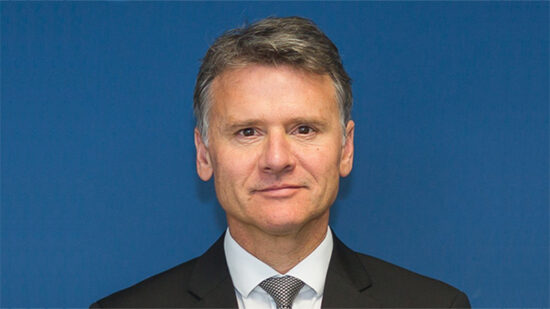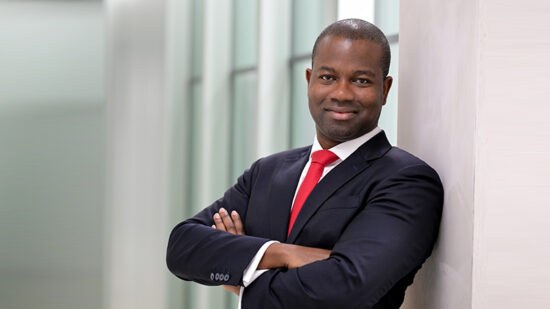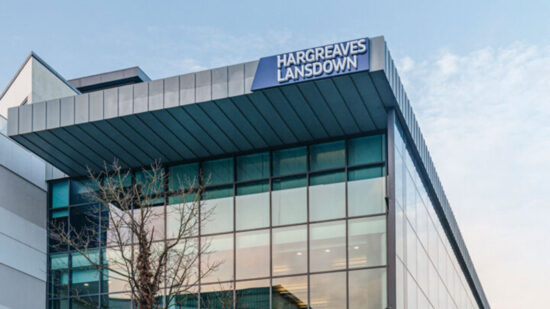“If you like, you can construe it as an admission of weakness on my and Michael Lindsell’s part,” is how Nick Train describes the buy-and-hold investment process that has generated a cumulative 286% return over 10 years.
Train, co-founder alongside Lindsell of boutique fund manager Lindsell Train, explains that earlier in
their respective careers both tried to be traders, but it did not work out. “To be successful with that sort of approach takes a certain kind of mentality, which we didn’t have.”
Instead, the two have focused on doing the opposite. “All things being equal, the cost of delivering
our strategy to investors is going to be lower because we trade so much less than the average strategy,”says Train.
Glacial conviction
But avoiding the drag on returns that comes with a high level of trading is not the only benefit of the type of strategy he employs, says Train. “There is a fundamental question to ask about one’s approach to equity markets: do you expect to make money for your clients over time by taking advantage of the volatility of asset prices or by participating in the wealth creation that goes on within successful companies?”
There is a big philosophical divide between those two positions, and it is clear the path Train has taken.To put it in numerical terms, the annual turnover of Train’s Finsbury Growth and Income Trust is 6%. Most funds considered to have a low turn- over are more in the 25% range, and the average across the industry is significantly higher than that. The portfolio only has 20 stocks, fewer than average, and the last new holding was added three years ago.
Such glacial conviction is impressive in a world where managers are under ever more pressure to justify their fees. “People in this industry are generating new ideas all the time but clients also have an expectation you should be doing something because you are earning a fee and you claim to be smart,” says Train.
“If our track record is anything to go by, it is intriguing that it is possible to deliver quite strong relative returns by essentially doing nothing.”
But turnover is only one way of measuring activity, the other way to look at how active a fund is is to see how far removed it is from the benchmark. On this measure, Train says the trust is very active.“It is an aggressively positioned portfolio and not a mainstream, broadly diversified UK equity strategy. We have 20 stocks. It is very concentrated but we are offering something radically different from the
mainstream, for good or for ill.”
While the fund’s holdings may be different to the market, many of the names in which Train is invested are well known, and a closer look at three of them provides some insight into how Train is thinking about the market and investments.
Movers and shakers
Diageo is a company Train has been happy to hold for a long time, even when the stock fell sharply on the back of poorer-than-expected results earlier this year.
Ten years ago, the spirits seller was paying a dividend of 27p per share, compared with 56p per share
this year. According to Train, this kind of appreciation is ideal. “You don’t need to have traded the
asset over that 10-year period to have benefited from the increase in the intrinsic worth of the company. Our approach is to find as many businesses like Diageo as we can: companies where dividends might double over a rolling 10-year period. Investors get a nice increase in income but it will drive capital growth as well.”
The reasons behind the decision to buy into Heineken three years ago provide another view of the investment method. The first was strategic, he says. “The demographics of the globe are very favourable for the owners of lager. We have a young and growing global population and young people tend to drink light beer.”
The second reason was a branding one. “Heineken is the world’s number one global beer brand. It is truly global at a time when we are expecting consumption of premium light beer to grow,” he says. Finally, there was a timing issue.
The summer of 2011 was the nadir of the world’s concerns about Greece and the stability of the euro.
“With a substantive business in Greece and southern Europe, and also a company with significant euro
revenues, Heineken’s share price was extraordinarily low over that summer,”he says. “We felt it presented a once-in-a-decade opportunity, and the subsequent performance has vindicated
that belief.”
Digital vision
It is Burberry, however, that provides the clearest view of Train’s thinking, and the role technology increasingly plays as an investment criterion. Over the course of this year it has moved from a middle-ranking holding to a major one.
While the shares have not done much for some time, the reason Train has continued buying stems
from a comment the outgoing CEO made to an analyst at the end of last year. Asked what she considered to be Burberry’s flagship store, she said Burberry.com.
“That was when windows flew open in my mind,” Train says, as it illustrated how seriously the company was taking digital marketing. He says Burberry has three times as many Facebook followers as any other European luxury brand, and its website traffic over the summer is edging toward 100 million visits.
“It is getting the brand to a much wider audience and, while it is not a tech company, it can use technology to enhance its growth rate over time and improve its return on capital because
its future growth will be not as dependent on opening new stores.”
New technologies
Train stresses he is not focused on bleeding-edge tech stocks, which he says is not his expertise. He is
much more interested in which industries or corporations are disadvantaged or advantaged by new
technologies.
“When you look back at economic history, it is about the productivity gains created by new technologies that is what characterises movements in asset prices over time.“It seems self-evident that this is ongoing. Moore’s law – that computing capacity is doubling every two years – continues to hold, and that is creating unheard of productivity gains for various industries. Conceptualising
what that means for every company you own or might consider owning is the key question.
“If we can find companies that are more advantaged than disadvantaged at the margin by the implications of that technological change, then we give ourselves the chance of delighting our investors over time.”






